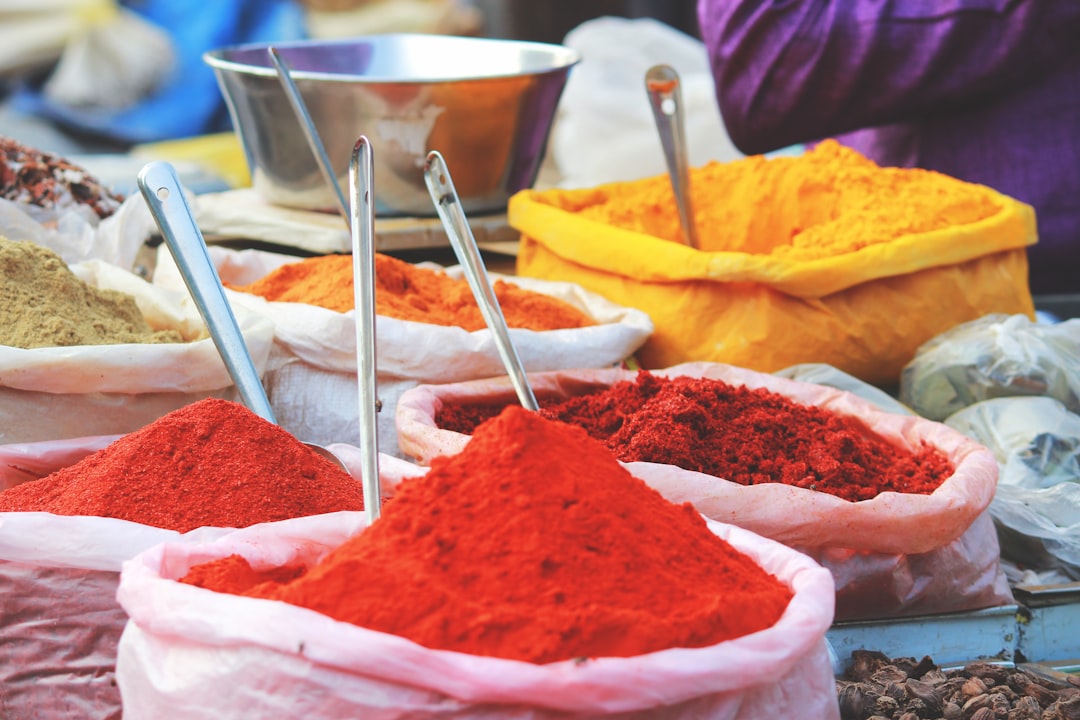Haldi doodh was alway something I dreaded drinking as a child. It didn't have a pleasant taste. The consistency always felt kind of off, as the powder never truly would mix in with the milk. It also signified weakness. It was the last resort when a cold had crossed the threshold. When my chest was too sore from coughing and my nose was dry and red from the constant blowing, my nanima would warm up raw turmeric and whole milk on the stovetop as medicine. I couldn't tell you for sure what exactly these medicinal properties were, but I can attest that it always made me feel better. A glass or two was all I truly needed, and suddenly my ears would pop and my throat would clear.
It was jarring when I first saw Haldi Doodh outside my home, made by hands that weren’t my grandmothers. I remember the weird knot in my stomach when I saw “Turmeric Latte” written in chalk on the menu of a “boho” LA eatery. American pop music playing in the background, the white flowers coming from the ceiling, and the aesthetically pleasing quotes splattered all over the walls all didn’t seem to mirror the drink they were selling. Haldi doodh was a drink fit for days spent with your head laying in your mother’s lap while she caressed your hair and made you honey tea to help you feel better. Haldi doodh felt awkward in a setting where the light was bright, warm, and inviting. The drink was meant to be served at dusk in order to lull you to a deep and rejuvenating sleep. Haldi doodh was a drink that filled the entire house with a certain aroma of care. A turmeric latte could never really sell you the same experience, even if it tried.
@paigeejenna a #turmericlatte always makes me feel better ✨ #healthyrecipes #foryou #lifestyle #tiktokfitness #turmeric #nightroutine ♬ Slow Down My Thoughts - Zachary Knowles
It wasn’t until recently that I've felt as though I could really vocalize the agitation that overtakes me when I see things like “turmeric latte,” or ghee marketed as a “super food” (and being pronounced as “gee” - shudder). For the most part, expressing these feelings used to be considered ungrateful, and met with comments like “you're just too sensitive”, or that “it’s just food.” However, food is personal. Food is history. Food is culture. Food is an extension of who you are and where you come from. Seeing cultural dishes in spaces where those who are making them don’t necessarily know the stories behind the dish feels inauthentic and artificial.
Three of the main foods I’ve seen being appropriated in this matter are salsa which has been repackaged as “Cowboy Caviar", Agua Frescas as “Spa Water”, and Dosas as “Lentil Pancakes.” Unsurprisingly, all of this has happened on TikTok.
@strawberrryc0ugh #greenscreenvideo girl made an agua fresca and passed it off as “spa water” 😭 #fyp #foryou #parati #paratupagina ♬ Monkeys Spinning Monkeys - Kevin MacLeod & Kevin The Monkey
All of these foods have existed for upwards of thousands of years and are integral parts of various cultures, but they have been repackaged as “wellness” and “clean girl” foods and then sold as an idea or creation from a white person. The term “culinary appropriation” has been coined to explain this phenomenon of white creators stealing inherently cultural and ethnic foods and repackaging them as their own superfood-esque creations.
The problem isn’t a white chef or creator making these dishes, it’s the fact that they are claiming that they have invented them and are selling them for profit. None of this income benefits the actual culture, history, or heritage that the dish originates from.
This whitewashing of culture dishing also aids in the erasing of authentic eateries. When you start selling pho, tacos, and butter chicken at every establishment, it takes away not only from their original flavor, but their cultures.
During lockdown, BIPOC owned restaurants and businesses were disproportionately affected. Many restaurants shut down because they didn’t have the financial resources to keep themselves afloat. In comparison, bigger chain restaurants- often owned by white people- were able to fund themselves through the pandemic because of their financial backing.
In this case, this conversation isn’t just about hurting someone's feelings, it’s about the uneven playing field in the food and restaurant industry. Ordering a butter chicken from the fine dining franchise JOEY because of their big name and general grandeur would be virtually insignificant to the business. However, if you ordered that same dish from a small mom-and-pop Indian restaurant, you would actively be supporting a family.
I won’t be unreasonable and idealistic and say that those who are preparing cultural dishes must be from a certain heritage, because not only is that impossible to enforce, it also diminishes the gray area for fusion food. Food is not a topic that can be deciphered without any nuance. However, I do believe that the conversation about culinary appropriation is much pertinent than what has been previously discussed. It isn’t just people of color being angry and believing that only they have the right to cook their cuisines, but a conversation on the manifestations this brings. This conversation having been reduced to sensitivity has directly contributed to POC restaurants and businesses failing. It’s high time we talk about the importance of the dinner table and the stories behind our meals.

